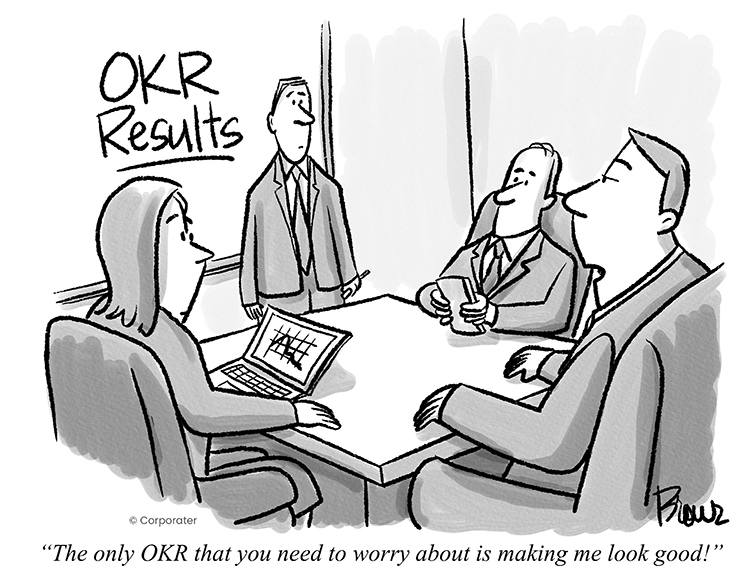
One of us (Paul) spent some time early in his career working in public accounting. No offense to accountants everywhere, but it wasn’t his favorite time, and he’s long since retired his calculator. However, one of the comforting aspects of that occupation was the knowledge that no matter how challenging or esoteric a problem he faced, he knew there was an answer in the form of “generally accepted accounting principles,” or GAAP, the set of rules guiding all accounting actions and decisions. In the OKR and Balanced Scorecard worlds, we don’t have any such guiding principles, but some “rules” have surfaced that seem to be unbreakable, among them in some quarters, the fact that when you (the boss) create a key result (measure in the Balanced Scorecard system), that becomes my (the employee) objective. This is as pure a definition of the old cascading model as possible, and the fact is, it’s not correct and can be damaging to your strategy execution effort.
There are at least two reasons this is the case. Note that for simplicity below, we’ll use OKR language, but everything stated applies to the Balanced Scorecard as well.
- It’s simply not practical
Unless you’re working in sales, perhaps the only function in which a pure cascading model may prove applicable, your key result may not be a direct fit for my role, function, or responsibilities in a way that makes it possible for me to effectively execute it at my level. It’s akin to the old “square peg in a round hole” challenge. I may adopt your key result as my objective, but in reality there is little I can do to influence or execute it, and thus the OKR I create, while technically aligned, proves irrelevant and unlikely to motivate performance. - It robs people of intrinsic motivation
Mountains of research point to the power of intrinsic motivation — engaging in an activity because we’re internally motivated to do so, rather than being induced to do so with some form of external reward (extrinsic motivation). What’s even more compelling is that intrinsic motivation can enhance creative results, and that’s exactly what we’re after when drafting OKRs — visionary and innovative ways of executing our strategy. In one interesting experiment that demonstrates the point convincingly, creative writers wrote poems on the topic of snow.i Then, one-third of the writers was assigned (without their knowledge) to an extrinsic motivation group. They were given a short “Reasons for Writing” questionnaire that asked them to consider reasons for being a writer; all of the items, according to previous research, were extrinsic. For example, being financially secure from writing a successful novel. A second group also filled out a questionnaire that had only intrinsic reasons, such as “the opportunity for self-expression.” The final third of writers (control group) spent a few minutes reading an irrelevant story. Then the writers wrote a second poem on laughter. At this point all of the poems were judged for creativity. The results were clear. Although the pre-measure poems (on snow) displayed no differences, those on the topic of laughter written by the group who had contemplated extrinsic motivation were significantly lower in creativity from the others. Just five minutes spent thinking about extrinsic rewards had lowered their intrinsic motivation, and hence creativity.
This is the substantial risk we take when forcing our OKRs on teams below us. In effect we’re saying, “Make this your objective because I said so.” It is the ultimate expression of extrinsic motivation, which strips away any opportunity for them to creatively engage with the OKR above them and determine a compelling OKR that signals their direct contribution to success. Rather than cascading OKRs, we should focus on connecting. Share your OKR with the team below you, explain your rationale for selecting it, and engage in a conversation with the team on how they might influence it at their level. This approach will facilitate alignment to overall strategic direction but allow for local variations and interpretations that drive creative expression and more meaningful OKRs at all levels.

